Text and photos by: Katie Lozancich
Corbet’s Couloir in Jackson Hole.
Just before reaching the top of Jackson Hole Mountain Resort (JHMR), the cable car lifts off, revealing an amphitheater of rocks and showing the famous, legendary and impressive Corbet’s Couloir. We all remember it from Bob Woodall’s 1989 photographs: a vertical drop, Doug Coombs going down in a shot that looks like a photomontage.
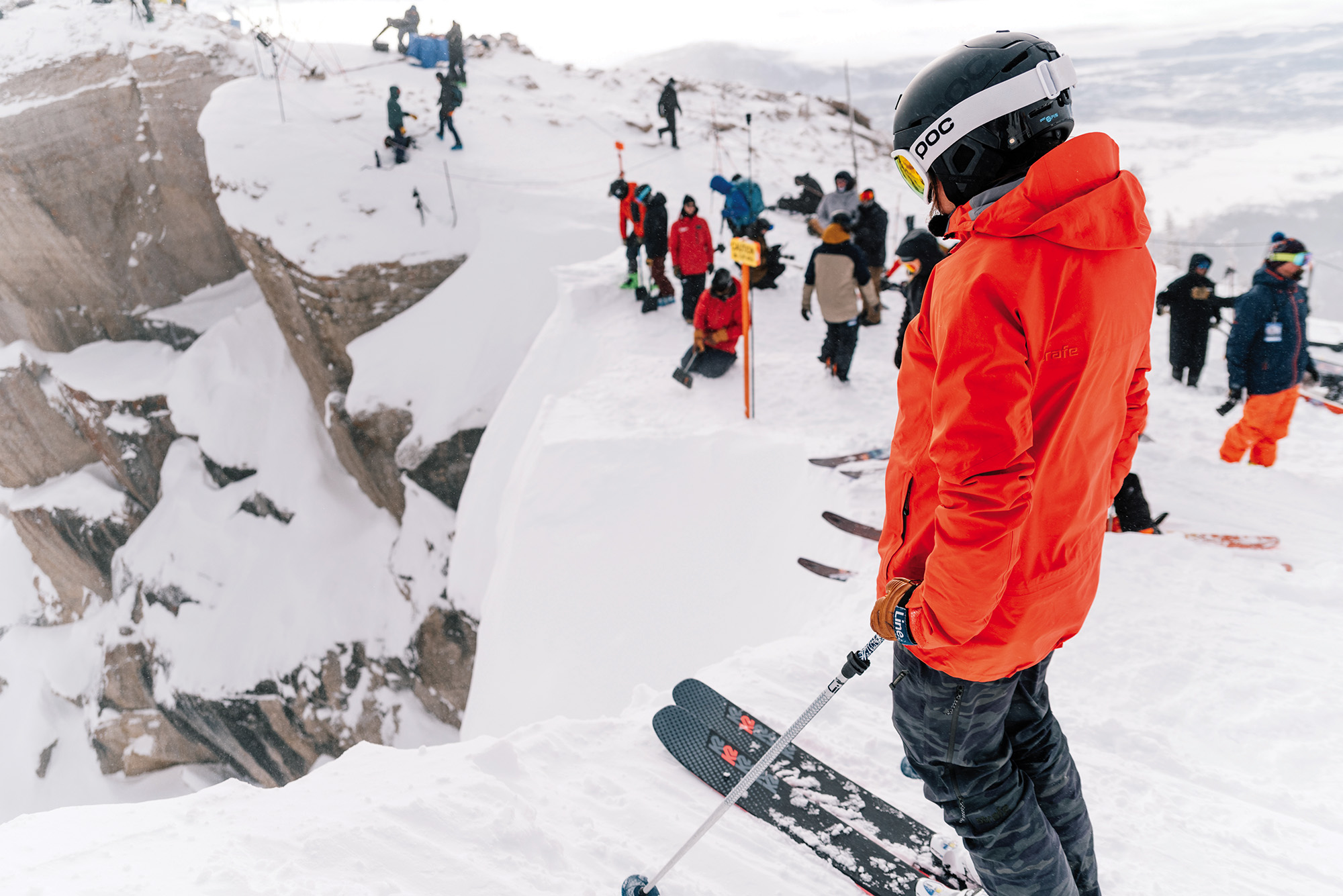
The cabin exudes the energy and enthusiasm of the large group of skiers and snowboarders watching the mountain in front of them. Today they are here to participate in the Kings and Queens of Corbet’s, all hoping to win the top prize and leave an imprint on the event watched by hundreds of thousands of fans connected from their computers and phones or immersed in the crowd.
The Corbet is a unique race, and it is hard to believe that it is considered an entry level race. Renowned as the most dangerous run in North America, it exerts a magnetic pull on anyone. Its reputation precedes it, and many brave skiers and snowboarders choose it so they can tell a story about tackling that gully, almost as if it were a rite of passage. However, few have the courage to launch themselves once they face the snowy abyss.
Skiing the Corbet requires a drop-in that varies from 3 to 6 meters. Once you pass the first step, you land on a 40- to 45-degree incline, which further accelerates your speed. No wonder Barry Corbet, after whom the channel is named, said, “Someday, someone will ski there,” when he first saw its famous funnel shape in 1960. It took seven years for his prediction to come true. Lonnie Ball was the first to complete the feat in 1967, opening one of the most legendary canals in North America. Five decades later, skiers and snowboarders are still launching themselves into jumps and tricks inside the channel, continuing Corbet’s original passion for that magical place.
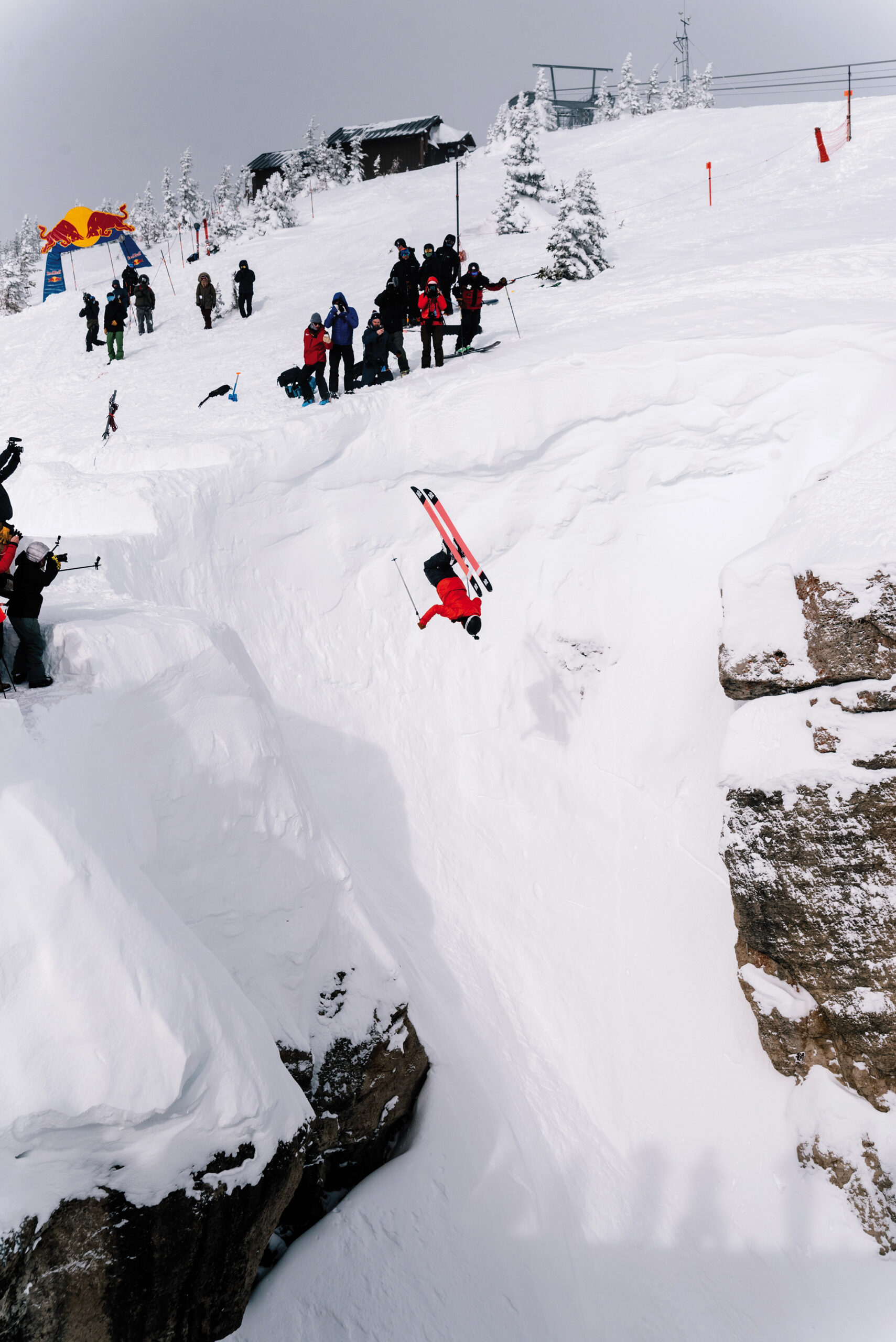
Before Kings and Queens became the viral competition we all know now, it was nothing more than a crazy idea hatched from the mind of local athlete and JHMR mainstay Jess McMillan. In 2016, McMillan inquired with her husband, Eric Seymour, about where the resort could host a freeride competition, and of course McMillan immediately thought of Corbet. Seymour, the resort’s director of communications and content, supported the idea but it took some time before all the fragments fit together.
In 2017, McMillian became the resort’s Senior Events and Partnerships Manager, ready to bring the competition to life. On her side she had the fact that she herself was a very experienced athlete. Prior to Kings and Queens, McMillan had competed on the Freeskiing World Tour for ten years, as well as having a freeskiing world title and numerous victories behind him.
This athletic background shaped the event, no small task considering it had to balance logistics dictated by weather windows, permits, security, and partnerships. Eventually, the race became a unique event over time, described by athletes even as a real session in the mountains with friends. Each athlete has the chance to launch himself into two runs down the channel performing any trick, with style and creativity, before crossing the finish line below. Snowboarders and skiers, as never seen before, compete together and are judged on the same playing field, which is more unique than rare in snow sports.
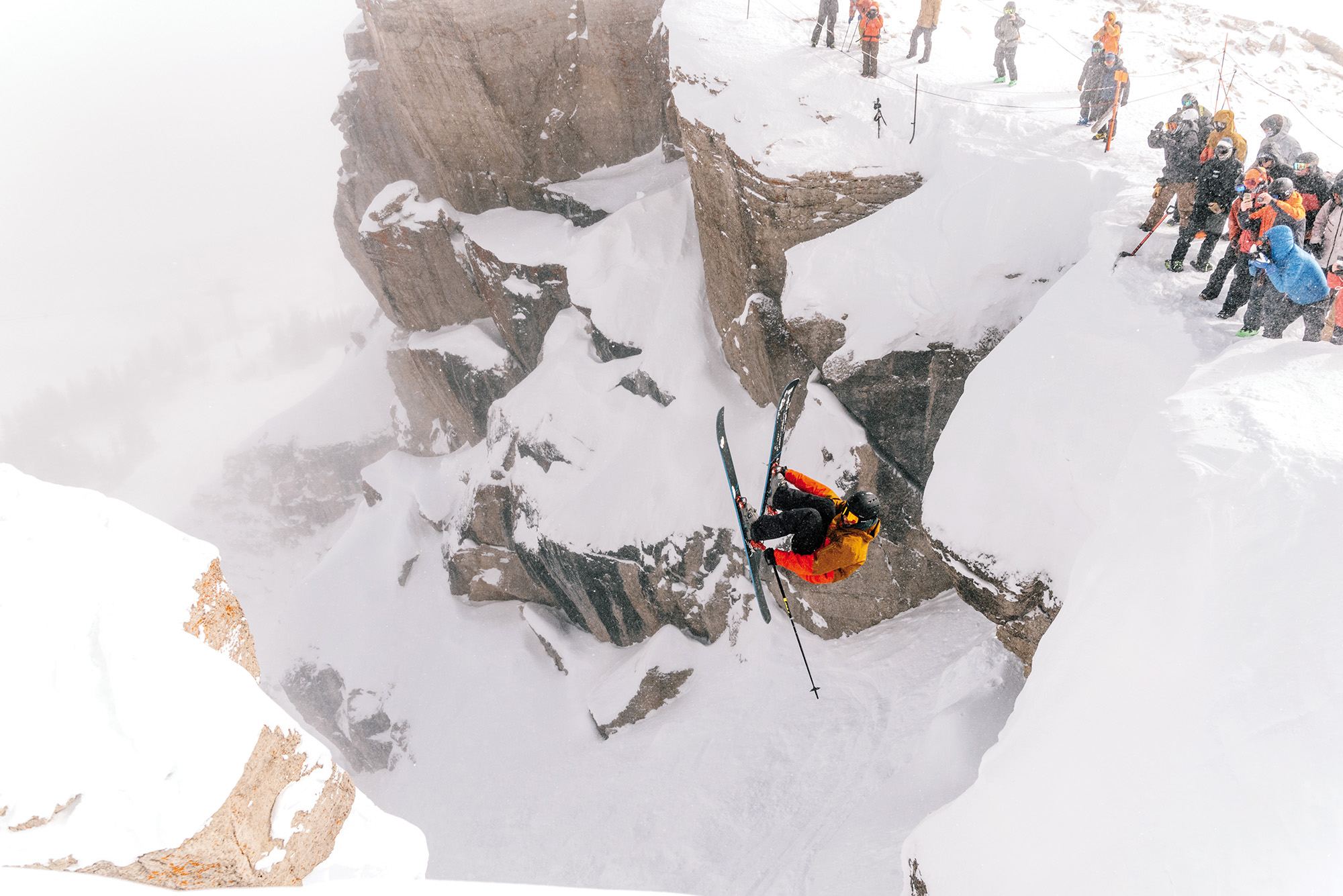
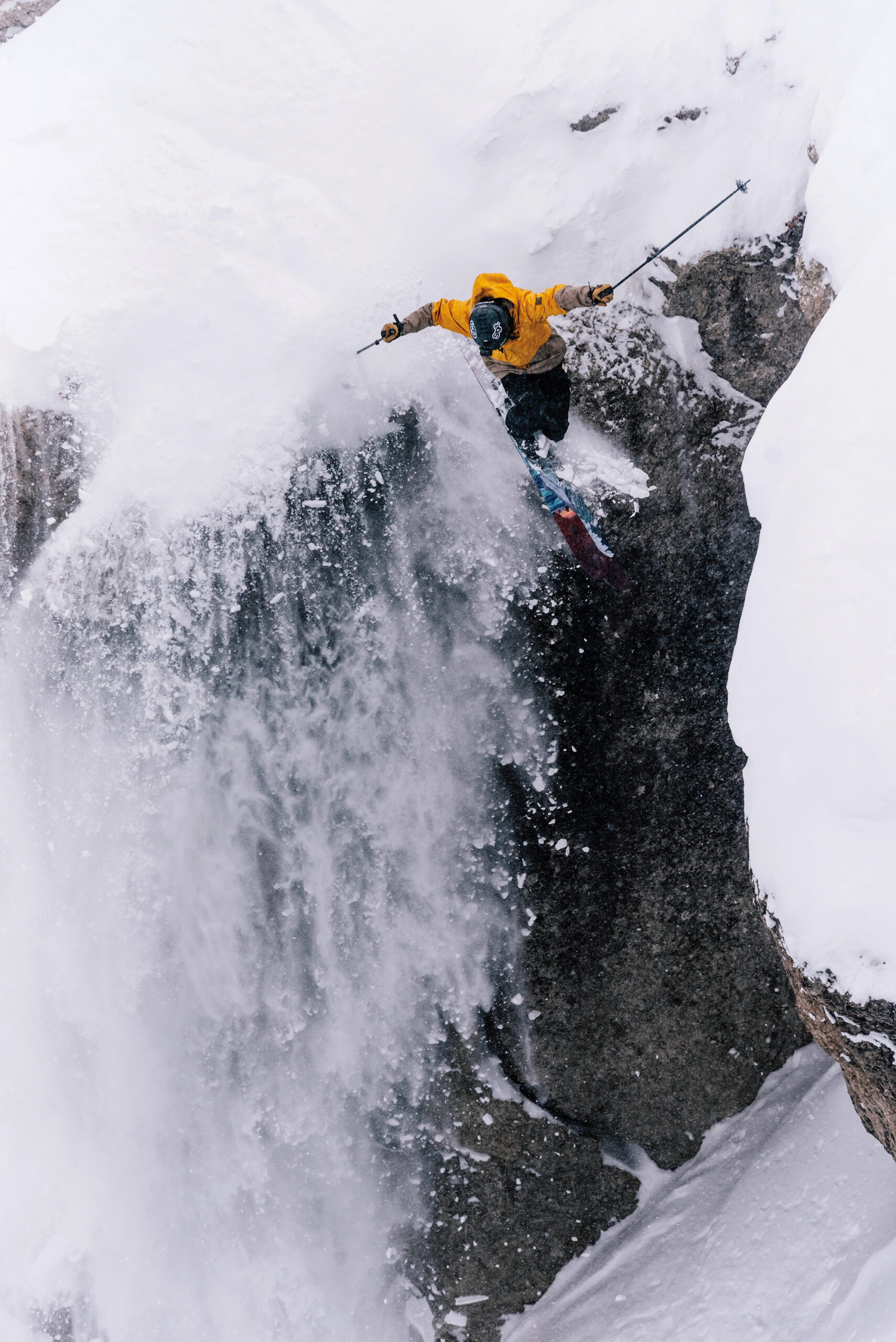
Kings and Queens disrupted the status quo in 2018. The first competition was particularly revolutionary because no one, including the athletes, knew what to expect. “It seemed like a hoax,” recalls skier Veronica Paulsen, who competed in the first edition of the race and would go on to claim the title in 2020 as the first woman ever to perform a backflip into the canal. Paulsen continued to build on his Corbet legacy by attempting a double backflip in 2023, earning the People’s Choice Award.
Corbet’s unique atmosphere, which is hard to find elsewhere, is why she has returned several times. “Many of the people competing in Corbet ski and snowboard competitively, so having a race that doesn’t feel like a structured event is really a breath of fresh air,” Paulsen explains. This putting the needs of the athlete first has led the race to grow more and more.
Kings and Queens also differs from other freeride competitions in the approach that guides the decision-making process. Scores are determined by the athletes themselves, who judge their teammates based on characteristics such as speed, degree of difficulty, innovation and how well they took the race home. Athletes also appreciate the fact that there is no fixed date for the competition. Instead, there is a flexible seven-day weather window with the hope of getting the best possible snow conditions.
One thing about Corbet is certain: if you want to do well, you have to do it big. The race venue includes the canal and the main track below. The landing zone that lies between two giant rock walls is not exactly generous. Winning runs involve using the ledge as an improvised springboard from which to dive deep into the channel.
Since the first edition, athletes have used their runs to perform many mind-blowing tricks: double back flips, superman front flips and wall rides are just some of them. But going all in on the big tricks is easier said than done. Competition is as much a mental game as it is an athletic game. A few meters before the big jump there is no visibility on the channel, and approaching the starting point the feeling is that of a complete jump into the void. Visualization is critical to success, and athletes spend days, weeks or even the entire season focusing on their runs.
After casting their votes, the top three male and female athletes are crowned by their peers. The highest scoring runs win the coveted King and Queen crowns and a substantial $10,000 prize pool. Although these are highly coveted, it is the fame derived from the event that is the greatest prize. Corbet is a unique opportunity for up-and-coming skiers to make their mark alongside some of freeski’s top talents such as Travis Rice and Arianna Tricomi. As a result, the competition sees a diverse set of talent from all kinds of backgrounds in snow sports.
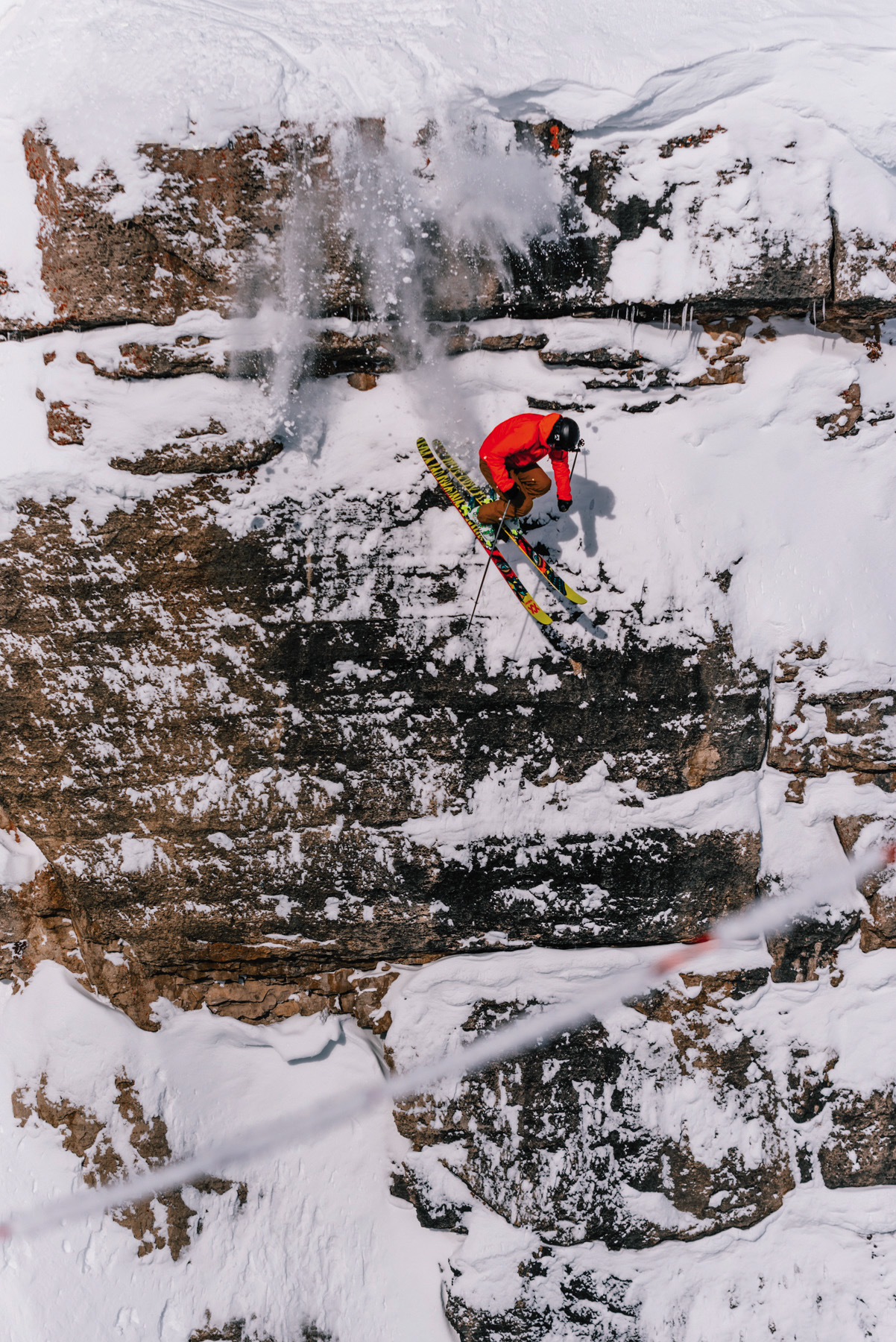
It is a rare context in which Olympians can compare themselves with the typical amateur who bartends at night to fund his athletic career. Competing and placing well in the event can change a person’s life virtually overnight. We are now in the seventh edition of the event and Kings and Queens and that crazy idea has become one of the most anticipated events, followed by millions of people on the Internet and social media. The park team works hard every year to provide athletes with the best possible experience in which to express their abilities to the fullest. But before the race begins no one really knows what to expect, and that is what makes it magical.
In February, the athletes return to the channel, while we from home or in the crowd will be there questioning and making predictions about who will triumph. As the snow begins to accumulate and anticipation grows ahead of the event, only one thing is certain. Kings and Queens has left an indelible mark on the freeride world by demonstrating what is possible when you empower athletes and create an environment in which they can succeed. From there, the limit is the sky.
